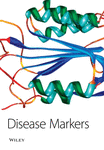Genetic Variants of Surfactant Proteins A, B, C, and D in Bronchopulmonary Dysplasia
Abstract
BPD_28D (O2 dependency at 28 days of life) and BPD_36W (O2 dependency at 36 wks post-menstrual age) are diseases of prematurely born infants exposed to mechanical ventilation and/or oxygen supplementation. In order to determine whether genetic variants of surfactant proteins (SPs-A, B, C, and D) and SP-B-linked microsatellite markers are risk factors in BPD, we performed a family based association study using a Greek study group of 71 neonates (<30 wks gestational age) from 60 families with, 52 BPD_28D and 19 BPD_36W, affected infants. Genotyping was performed using newly designed pyrosequencing assays and previously published methods. Associations between genetic variants of SPs and BPD subgroups were determined using Transmission Disequilibrium Test (TDT) and Family Based Association Test (FBAT). Significant associations (p ≤ 0.01) were observed for alleles of SP-B and SP-B-linked microsatellite markers, and haplotypes of SP-A, SP-D, and SP-B. Specifically, allele B-18_C associated with susceptibility in BPD_36W. Microsatellite marker AAGG_6 associated with susceptibility in BPD_28D/36W group. Haplotype analysis revealed ten susceptibility and one protective haplotypes for SP-B and SP-B-linked microsatellite markers and two SP-A-SP-D protective haplotypes. The data indicate that SP loci are linked to BPD. Studies in different study groups and/or of larger sample size are warranted to confirm these observations and delineate genetic background of BPD subgroups.




